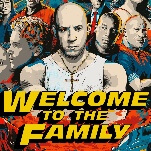Often, the advice given to writers who claim they “can’t write for women” or “don’t know how to write male characters” is to write a character the way they normally would and then change the damn pronoun. But that hasn’t stopped generations of authors from engendering certain actions and attitudes to the particular sexes. In general, it can be said that men are written to be active, while women are more often passive. Exploring this binary division further, data scientist David Robinson analyzed which verbs most often follow “he” or “she” in the Wikipedia plot descriptions of over 100,000 movies, books, TV shows, and video games. The results highlight a stark contrast along lines of violence, forgiveness, and power.
Robinson was inspired by his colleague Julia Silge’s analysis of gendered verbs in the novels of particular authors, but wanted to expand the dataset, focusing on verbs with at least 200 uses and that skewed the most one way or another. Noting that the text he’s analyzing is Wiki plot descriptions and not the author’s original work, Robinson says “it’s almost more about what happens than how an author describes the work: we’re less likely to see ‘thinks’ or ‘says,’ but more likely to see ‘shoots’ or ‘escapes.’”
At a glance, we can see that men are often instigators: He proposes; he rescues; he kidnaps. While female characters aren’t left with much else but resignation: She accepts; she forgives; she cries. Of course, as with any cold, scientific analysis, these graphs leave out many of the exceptions to the rule and lack any sort of nuance the original author might have employed. But it’s an interesting look at the way our culture has effected the gender binary in fiction, and vice versa.








































